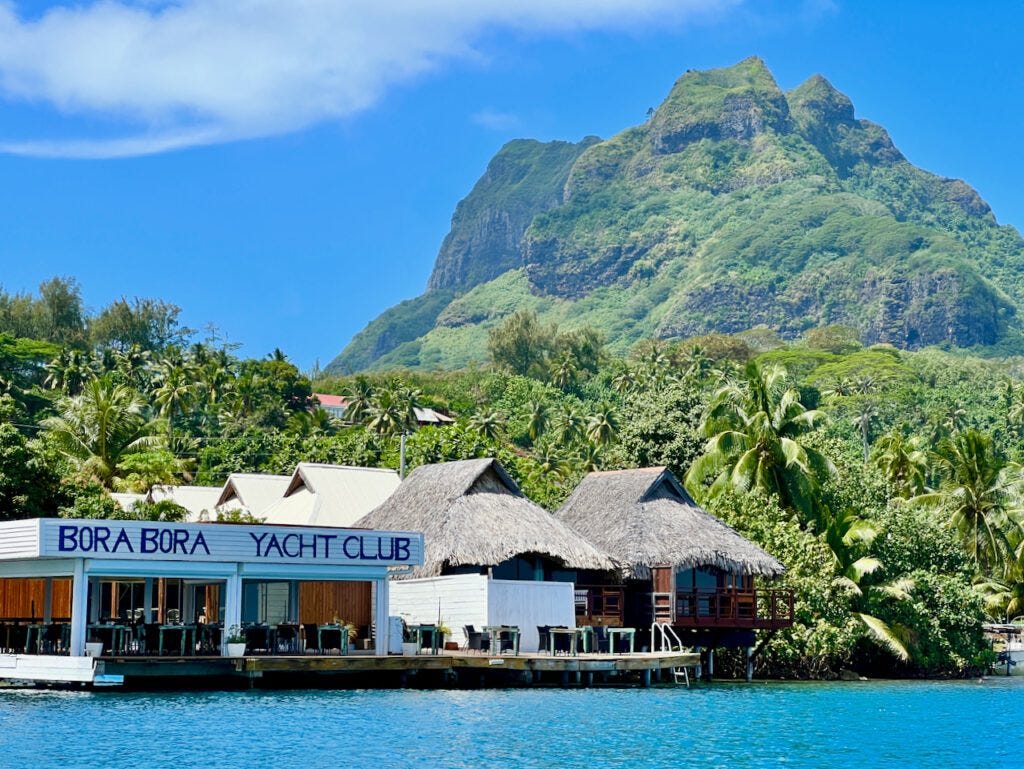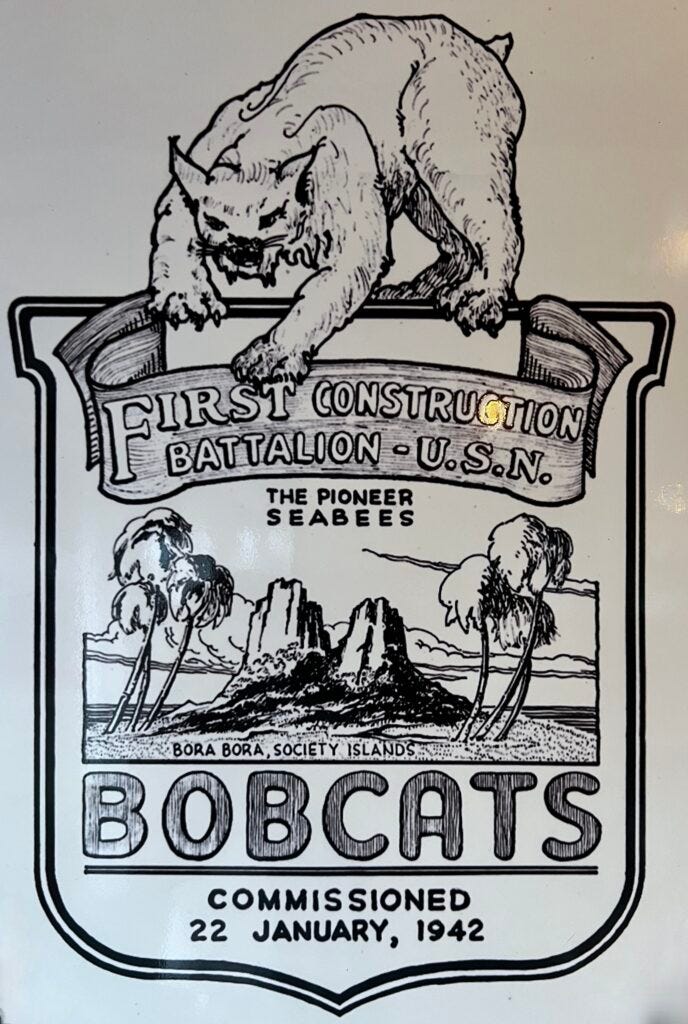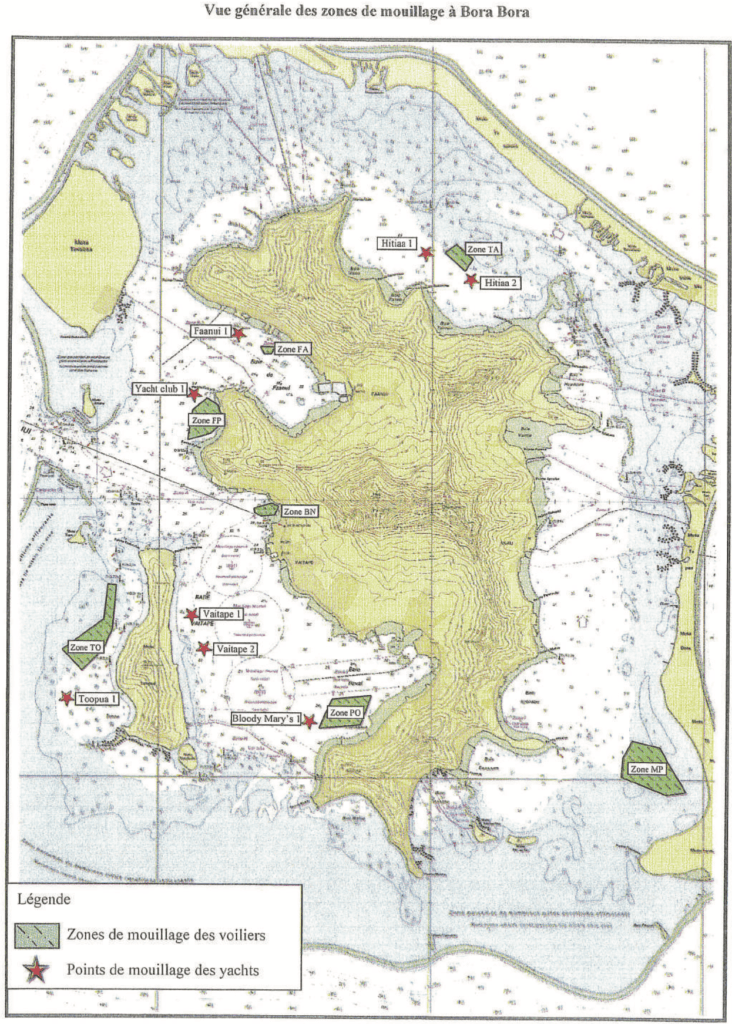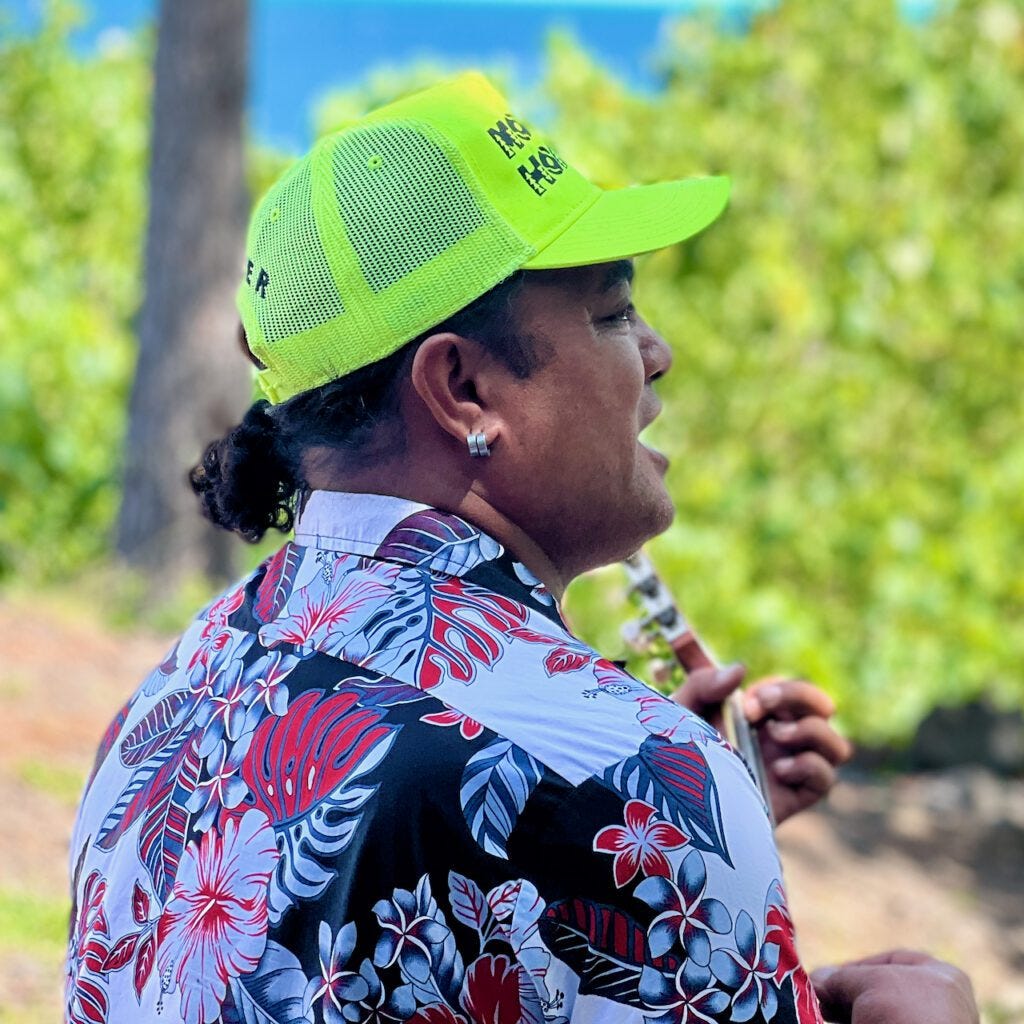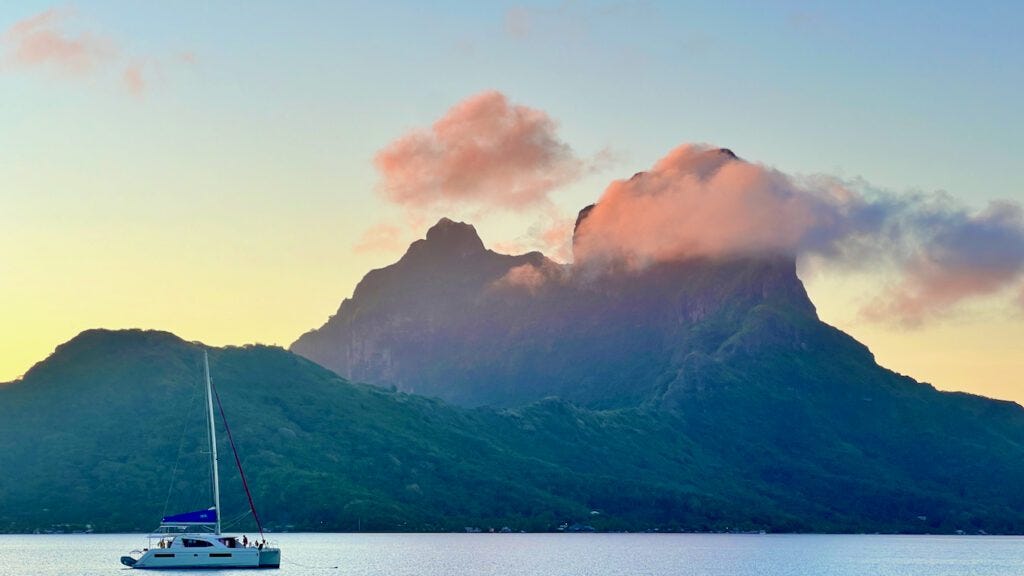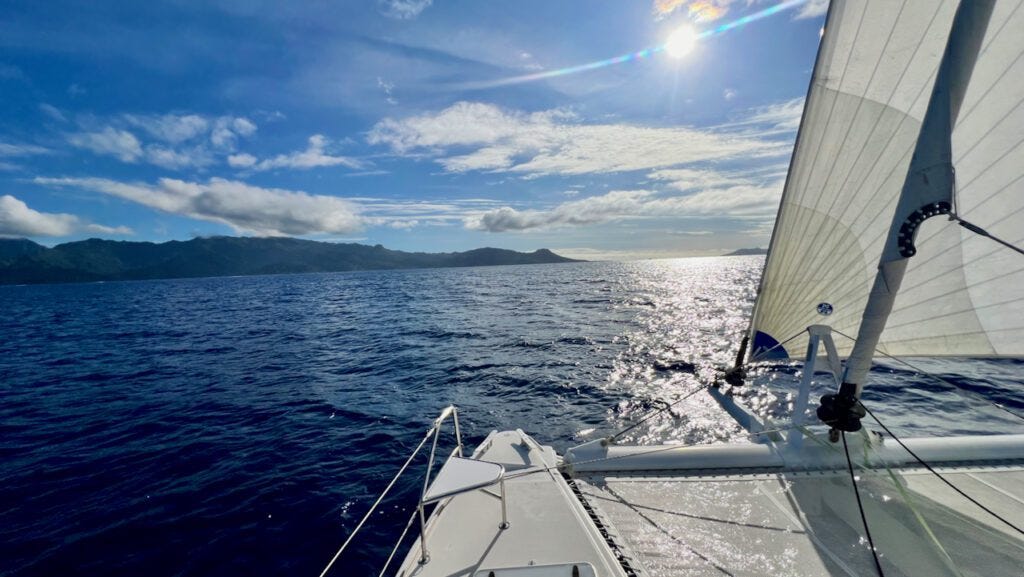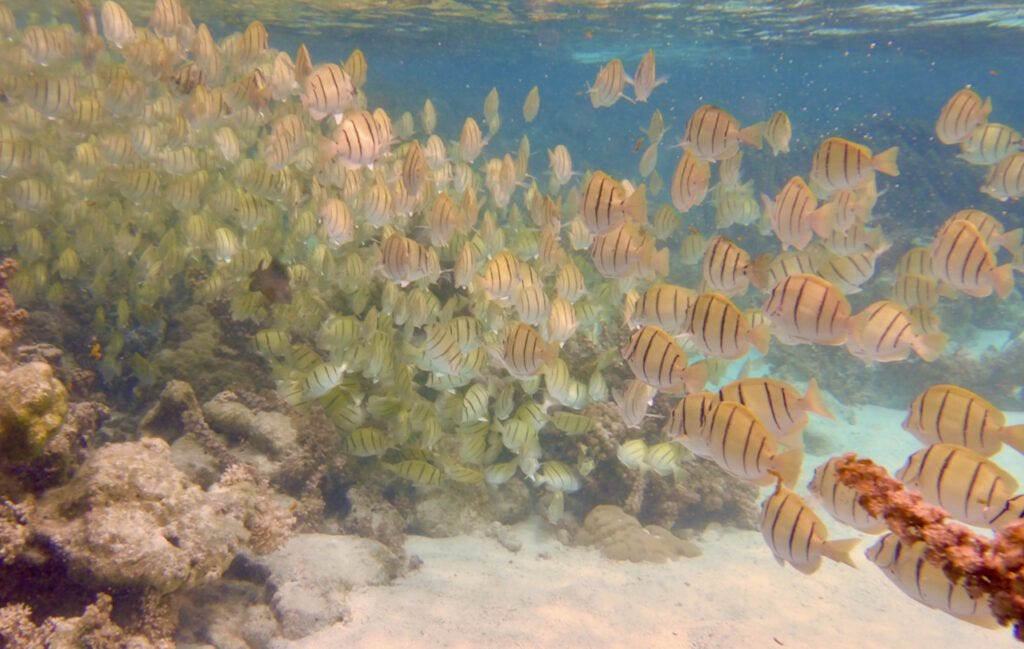Bora Bora
Vavau
On December 7, 1941, the Japanese Air Force delivered an attack on the US Naval fleet in Pearl Harbor, Hawaii. Thus began World War 2 for the US. A month later, on January 22, 1942, congress authorized "Operation Bobcat," which transformed the French Polynesia island of Bora Bora into a strategic outpost for the US war efforts in the Pacific. The once sleepy island of 1,200 residents suddenly found themselves in the company of 3,500 US servicemen.
The Navy Seabees dynamited the island's only pass through the reef to widen it, installed gun emplacements to defend it, and built roads, an airstrip, a quay, and a huge fuel depot. Within a few months, Bora Bora was the key refueling stop for Allied shipping in the Pacific. Its airport provided crucial air support for the region. As late as 1963, it remained French Polynesia's only international airport. As they do, the Seabees accomplished this with remarkable speed and efficiency. I imagine the startled Bora Borans standing around looking at each other saying, "...what the heck just happened?"
Today, Bora Bora is French Polynesia's top tourist destination--the "Pearl of the Pacific." About half of French Polynesia's 230,000 annual tourists make it to Bora Bora. Most of the 600-700 private yachts that pass through French Polynesia each year also stop here. We spent two weeks sailing around the lagoon. It is one of the highlights of our cruise thus far. It is a "real stunner" (as my Aussie friends would say). It is as if you mashed up the best of the Marquesas with the best of the Tuamotus into one island and then added better restaurants.
Most tourists never leave their over-water bungalow resort (no judgement here--I get it). Visiting by boat gives you a broader perspective. The four mooring fields in the lagoon gave us a nice island sampler.
Vavau
The locals don't call it Bora Bora. The Polynesian name is Vavau. When Cook arrived, he misheard the locals referring to the pora pora (firstborn). Thus, the island became known to europeans as Bora Bora. At least that's the story we get from Rai, our guide around the island for a day. Seems likely. The high school on the island is named "Lycee Polyvalent Ihi-Tea Vavau," which uses the original Polynesian name.
Moorings vs Anchoring
Because of its popularity and importance as a top tourist destination, Bora Bora has the most restrictive anchoring policies in French Polynesia for visiting yachts. This is not popular with many cruising sailors. Instead of dropping our anchor for free, it costs 4,000 XFP (about $40 USD) per night to stay on a mooring. Moorings are permanent anchors (often giant concrete blocks) with a line with a loop floating on the surface. We attached the boat to the loop with two of our own lines. There are two free anchorages. You can only anchor in them for a total of 36 hours.
The government has installed about 100 of them around the island. Bora Bora Mooring Services administers the mooring program. Heimana from the mooring service stops by and collects the fee. Twice a week, he collects our trash (which is a big deal for cruising sailors). Sometimes, he stays for coffee if our stop is toward the end of his rounds.
While we don't love paying $40 per night, I don't mind being on a mooring. We don't have to hassle with the anchor and risk getting it stuck, and we don't accidentally damage the coral on the bottom. However, we can't be certain of the mooring's strength and security (but we can't be certain of my anchoring technique either).
I suspect this mooring and anchoring program is a harbinger of what's to come for some of French Polynesia's most popular cruising stops (e.g. Fakarava, Mo'orea, Tahiti, Huahine). I get it. Like many of the national parks in the US, some places can get loved to death.
A Few Photos:
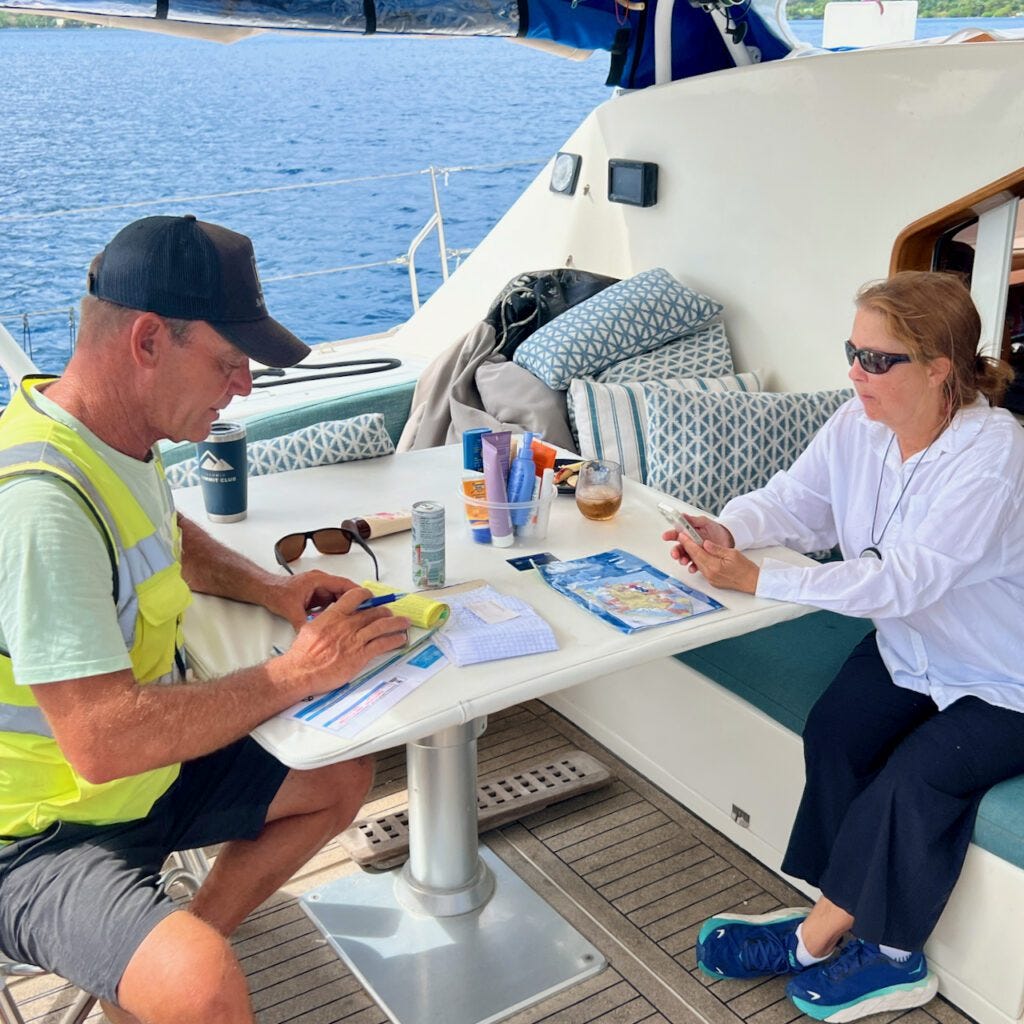
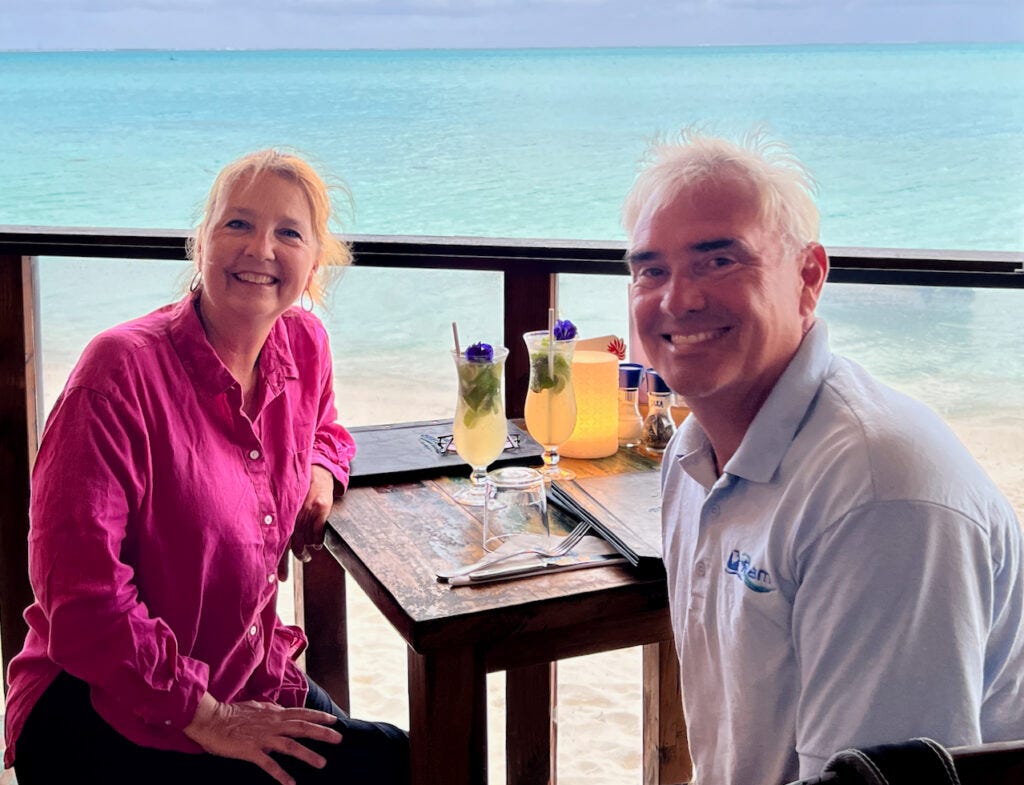
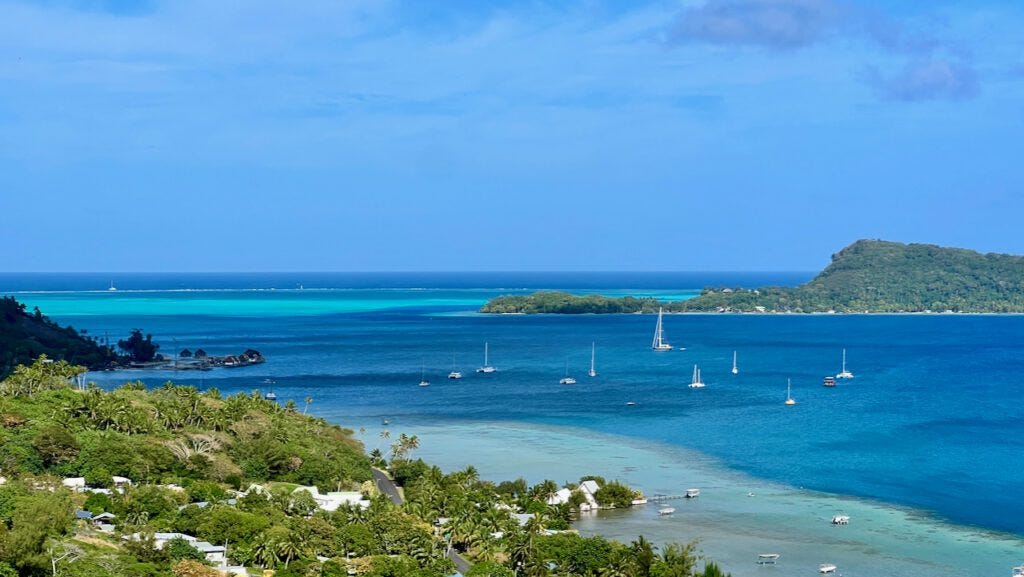
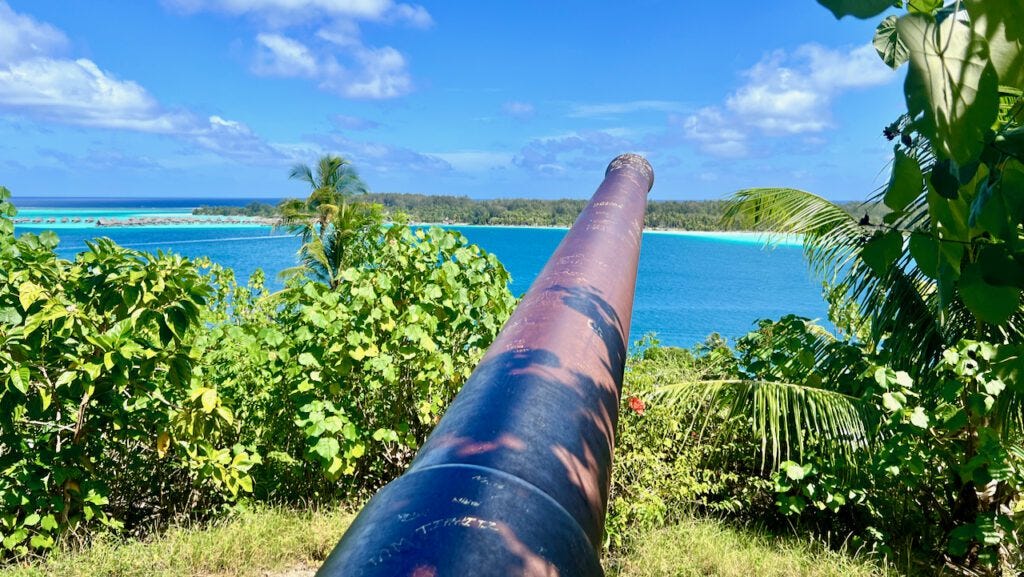
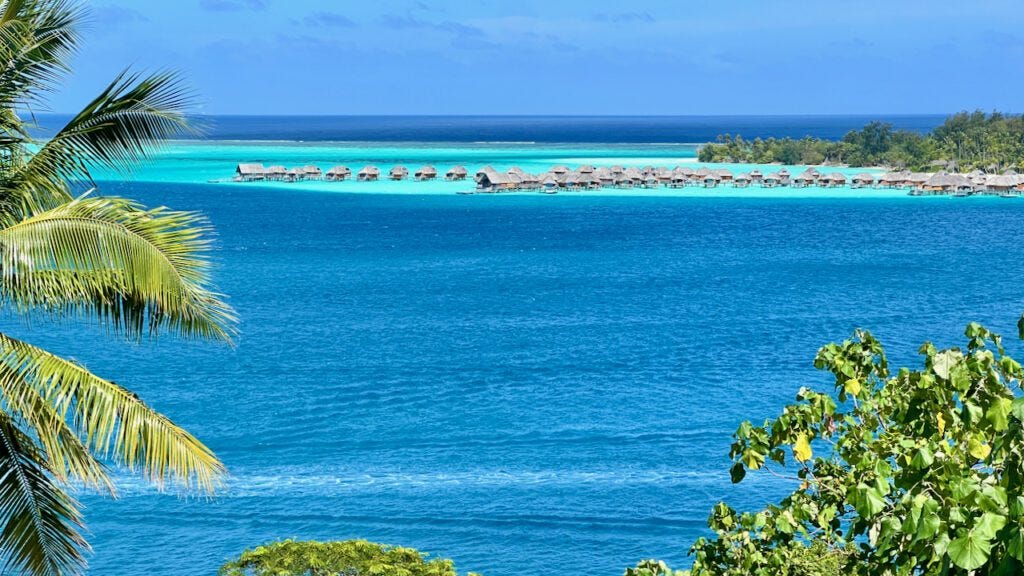
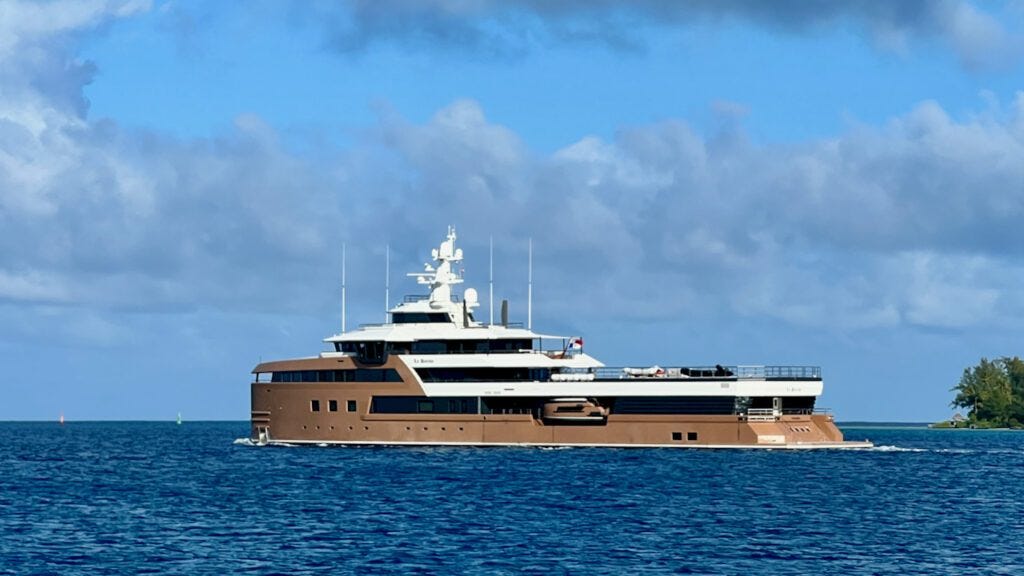
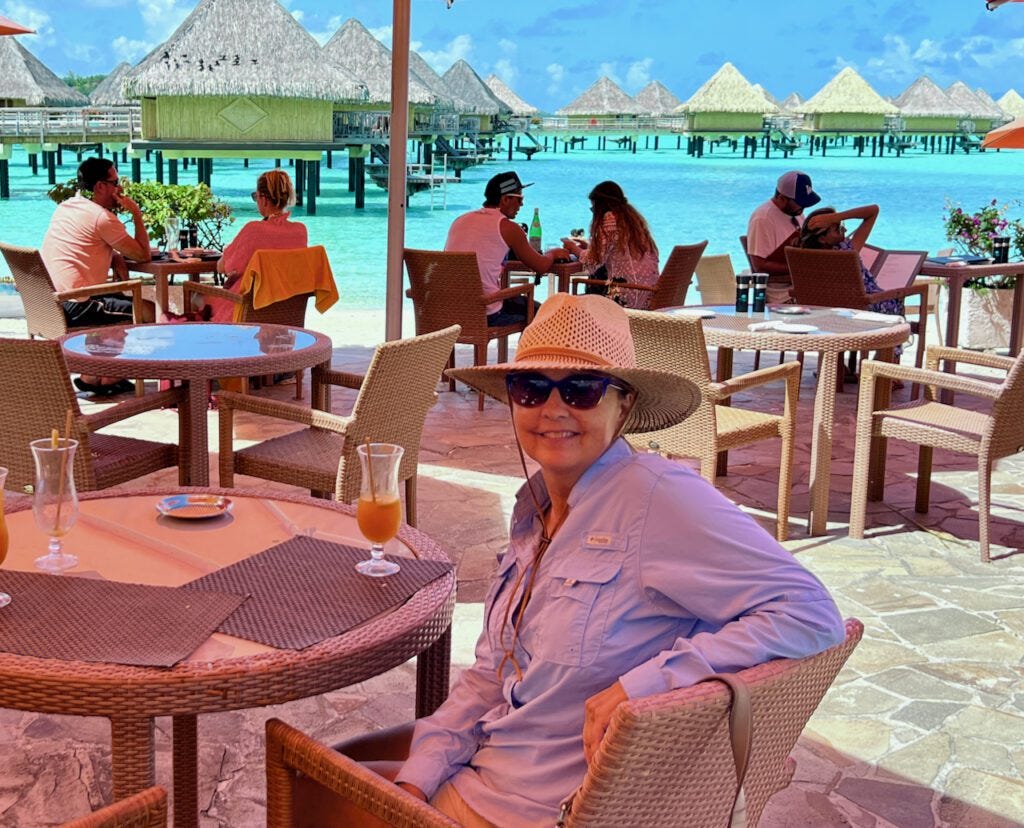
Daily updates from our PredictWind log:
Raiatea
Mon Aug 12 2024 18:42:00 GMT-1000 (Tahiti Time)
16 42.235s 151 26.890w
All is well. We enjoyed a delightful three hour beam reach from Huahine to Raiatea. Full main, Jack Reacher and 1/3 daggers. Slight beam seas.
We are anchored at the north end of the mooring field in the “swimming pool” anchorage. No available moorings.
—Jim
Taha’a
Tue Aug 20 2024 17:12:00 GMT-1000 (Tahiti Time)
16 40.817s 151 29.189w
All is well. We are presently on a mooring in Apu Bay on the island of Taha’a, French Polynesia. We motored over this morning after leaving our mooring in the Uturoa town anchorage on the island of Raiatea.
Raiatea and Taha’a share the same lagoon. It was a short one hour motor over here.
The moorings are provided for use for free by the Champion pearl farm. They only ask that you come and visit their operation. We will do that tomorrow. And, we will hike around the bay to visit the nearby vanilla plantation.
It’s been howling the past few days. A “squash zone” developed which cranked up the “maramu” winds with gusts in the mid 30 knot range. We were on a secure mooring but the anchorage was exposed to the breeze and the wind chop. It made the dingy ride into the town of Uturoa wet and uncomfortable. We had enough of sitting it out there and decided we needed a change of scenery. Here we are!
—Jim
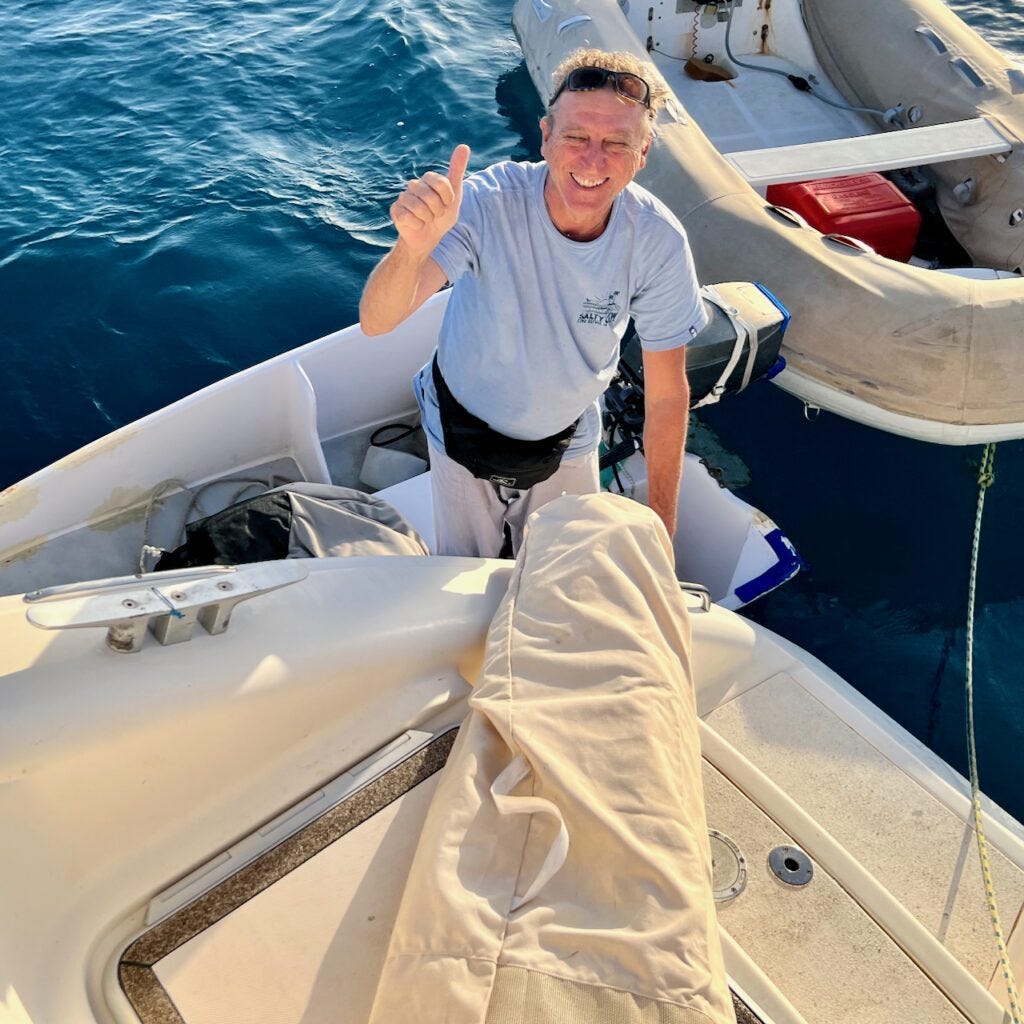
Taha’a - Tapuamu
Thu Aug 22 2024 13:38:00 GMT-1000 (Tahiti Time)
16 37.124s 151 33.774w
All is well. We are presently anchored over the 6’ deep sand shelf across the lagoon from the village of Tapuamu. We motored over this morning from Apu Bay.
The pearl farm only lets you use their mooring in Apu Bay for one night (you have to visit their operation and showroom). We managed to eke out two nights there before they politely told us they wanted their mooring back.
We met Leonardo there, an Italian sailor with a small canvas shop. He repaired our rain shade and one of our leaking bean bag chairs. Great guy.
Taha’a’s main cargo dock is located Tapuamu Bay, and the village of Tapuamu. The cargo ship arrived and docked while we were loitering around checking things out.
The bay is small and deep. It has two government moorings. Both were taken. We didn’t feel like dealing with 300’ of anchor chain so we went across the lagoon a mile away and joined 3 other cats (and one brave monohull) on the 6’ deep sand shelf. Yay retractable dagger boards!
We will dingy back to the town for dinner. Tomorrow we will snorkel the famous coral gardens.


